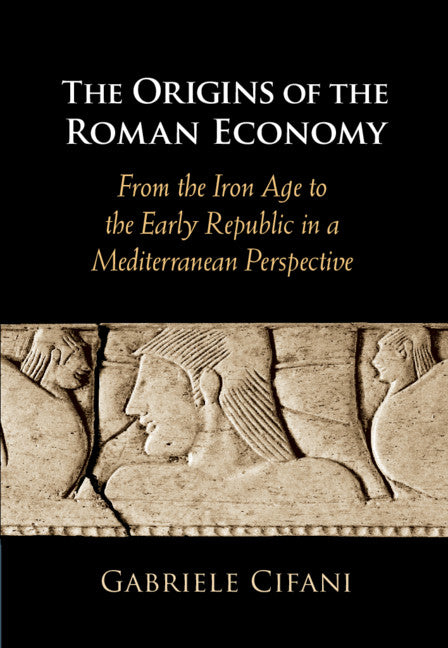Freshly Printed - allow 10 days lead
Couldn't load pickup availability
The Origins of the Roman Economy
From the Iron Age to the Early Republic in a Mediterranean Perspective
Focuses on the economic history of the community of Rome from the Iron Age to the early Republic.
Gabriele Cifani (Author)
9781108478953, Cambridge University Press
Hardback, published 17 December 2020
466 pages, 68 b/w illus. 11 tables
26 x 18.3 x 2.6 cm, 1.14 kg
'… it draws on an impressive knowledge of both textual and archaeological sources, and introduces recent methodological innovations and theoretical perspectives in a synthetic treatment of early Rome's economic development.' Tymon de Haas, Bryn Mawr Classical Review
In this book, Gabriele Cifani reconstructs the early economic history of Rome, from the Iron Age to the early Republic. Bringing a multidisciplinary approach to the topic, he argues that the early Roman economy was more diversified than has been previously acknowledged, going well beyond agriculture and pastoralism. Cifani bases his argument on a systematic review of archaeological evidence for production, trade and consumption. He posits that the existence of a network system, based on cultural interaction, social mobility, and trade, connected Rome and central Tyrrhenian Italy to the Mediterranean Basin even in this early period of Rome's history. Moreover, these trade and cultural links existed in parallel to regional, diversified economies, and institutions. Cifani's book thus offers new insights into the economic basis for the rise of Rome, as well as the social structures of Mediterranean Iron Age societies.
1. Introduction
2. Notes on the geographical context of early Rome
3. The beginnings of a longue durée
4. The Early Iron Age (Latial Phases II and III)
5. A settlement unlike others: the economic background to the rise of Rome
6. Latial Phase IV
7. Latial Phase IV A
8. Latial Phase IV B
9. The archaic phase (580–500 BC)
10. Modelling the demography and consumption
11. People, places, times and institutions of roman archaic economy
12. The economics of the early calendar
13. The early Latins overseas
14. The Fifth century BC
15. Crisis and opportunities in the fifth century BC
16. The archaeological evidence of the fourth century BC
17. The fourth century transformations and the end of the roman archaic economy
18. Epilogue
Appendices.
Subject Areas: Economic history [KCZ], Classical Greek & Roman archaeology [HDDK], Ancient history: to c 500 CE [HBLA], Middle Eastern history [HBJF1], European history [HBJD]


